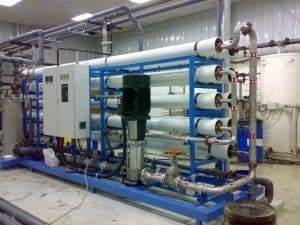
I don’t buy and drink Bordeaux wine just because it tastes good. I’m looking for stimulation of the mind and palate, since the latter can be had from the most innocuous of wine regions at any price point. The real joy comes from buying multiple bottles and watching wines as they evolve, drinking a bottle every few years, taking time to enjoy the experience our senses bless us with. This is the role of Bordeaux wine in my life; the beverage that is obsessed over rather than guzzled.
When I buy Bordeaux every year, I want to make sure that I am getting a wine that will evolve positively for at least 10 years, developing extra aroma and a smoother profile. What I have discovered over the past 2 or 3 years, as I crack many of the first bottles from my cellar(98,00,01 vintages mostly), is that several estates that made delicious wines when I first bought them are marred by serious flaws from the wine making process. These wines taste like they are tarry and soupy, and while they still possess a lot of sweet glycerin, they have become fatiguing on the palate and lack any sort of fresh vigour that would otherwise enliven the taste buds. Maybe these wines are still too young, but I find it hard to believe that they will ever come around and develop any sort of energy to their flavour. At some point aged over-made wines are like too much make-up on Grandma, an awkward embarrassment. I believe it is simply safer to go with the tried and tested formula in Bordeaux, wines that are made traditionally and age because the fruit has ripened but not pruned, and stabilized by judicious aging in oak.
I’m not suggesting that I want to return to lean, esoteric, tannic wines made in the past. Many of the modern techniques used in Bordeaux wineries have improved the wines, especially in lesser vintages, but don’t seem to cause the tarry and soupy character, but can counteract faults from specific vintage conditions. Vacuum concentrators and reverse osmosis machines can remove extra water from wines affected by last minute rains. Micro-oxygenation can temper rough tannins and may even extend the ageability of wines. Finally, barrique malolactic fementation is laborious and creates accessible wines in their youth but over time these wines converge with the non barrique malo wines.
The first of the red herring techniques is over-ripeness, leading to sweet fruit flavours, lack of acidity and high alcohol, three things that tend to create delicious wines but hinder the freshness of wines as they age. The second is an overuse of oak, in partucular highly toasted oak barrels, which add delicious smoky, vanilla flavours that are like a blanket on wines destined for old age. The sooty oak aromas can overpower the natural aromas from the grapes, in particular the secondary earthy aromas that develop in old bottles. Oak can also add tannin to the wine,good for ageability to a degree but if the wine is already strongly extracted and the oak is strong over time a bitterness similar to dry cocao develops causing the delicate long finish of some great wines to be muted and unappetizing.
There are still wineries dedicated to more tried and true harvesting and winemaking practises. Unfortuantely they are in the minority. Next week I will highlight several wineries based on my own tasting notes as well as those of other tasters that remain true to tradition and are producing wines of freshness, vigour and purity.
Top 10 Traditional Bordeaux Wines




